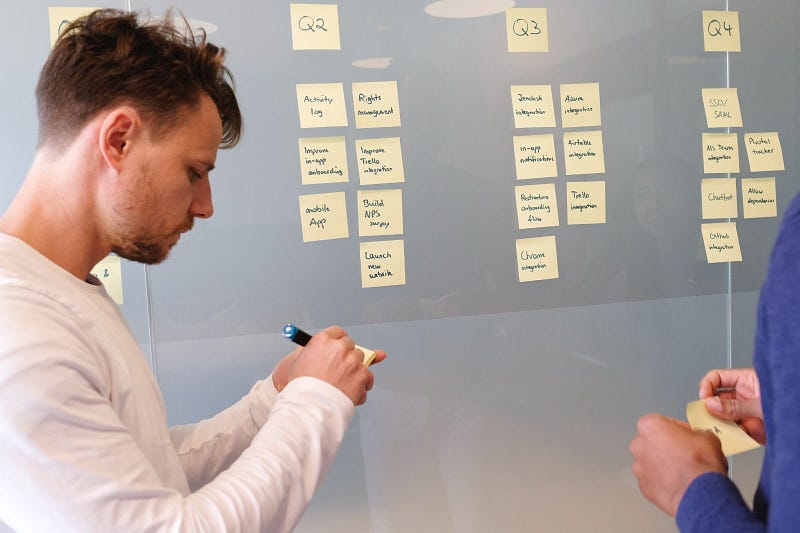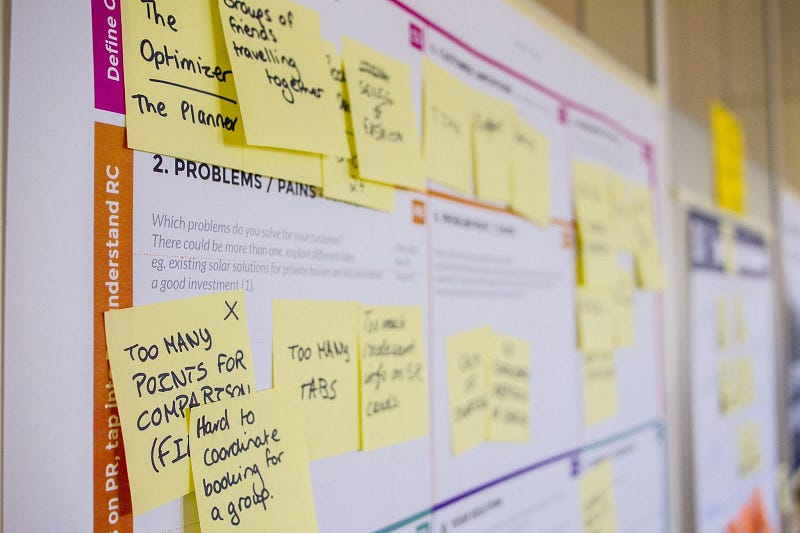Did you know that only half of organizations understand the importance of project management? Out of these organizations, only 29 percent are effective in using it. This means that there’s a lot of room for improvement when it comes to making the most of your project timeline.
In project management, a timeline is absolutely essential. This is because it allows you to track the progress of your project and identify any potential delays or problems so that you can take corrective action.
In this article, we’ll look at how to make the most of your project timeline. We’ll start by discussing the different types of timelines and then we’ll look at how to create a timeline for your project. Finally, we’ll discuss some tips for using your timeline effectively.

What is a project timeline?
When managing a project from conception to completion, it is important to have a timeline in order to track the progress of each task and ensure that the project is completed on schedule. A project timeline is a graphical display of all the tasks involved in a project and how they are related to one another.
The most important part of creating a project timeline is understanding the dependencies between tasks. For example, the task of writing a report may be dependent on the task of conducting research, which is in turn dependent on the task of gathering data.
Different types of project timelines
There are a variety of different types of project timelines, each with its own advantages and disadvantages.
The most common type is the Gantt chart, which organizes tasks by start and finish date. This type of timeline is best for projects with a finite number of tasks that can be completed in a specific order. Often, Gantt charts are used for construction or manufacturing projects.
Another common type of timeline is the product roadmap, which shows how a product will evolve over time. This type of timeline is best for projects with many tasks that need to be completed in a specific order and can be changed depending on customer feedback. Product roadmaps are often used for software development projects.
The third type of timeline is the milestone timeline, which shows when specific milestones will be reached. This type of timeline is best for projects with many tasks that need to be completed in any order. Milestone timelines are often used for marketing or research projects.
Benefits of using a project timeline
When you are managing several projects at once, or even just one project with multiple sub-tasks, it can feel impossible to keep track of all the moving parts and when they are due. This is where a project timeline can be incredibly useful.

A timeline can help you to:
- See at a glance what tasks need to be completed and when they are due
- Assign deadlines to tasks and track how well you are meeting them
- Spot potential problems and delays early on, so that you can take corrective action
- Manage resources effectively by ensuring that tasks are scheduled for the right people and that everyone is aware of their responsibilities
Some of the main benefits include:
Improved communication and coordination
A timeline will help to ensure that everyone involved in a project is aware of what needs to be done, when it is due, and who is responsible for completing each task. This can help to avoid any misunderstandings or disputes about tasks or deadlines.
Increased efficiency and productivity
By knowing what tasks need to be completed and when, team members can plan their work more effectively and avoid overlap or duplication of efforts. This can lead to a more streamlined and productive work process.
Greater accountability
Having a timeline in place can help to hold team members accountable for their tasks by providing a visual representation of what has been completed and what still needs to be done.
Easier project tracking and management
A timeline can serve as a central repository of information for all aspects of a project, from start to finish. This can make it easier to track the progress of the project and identify any potential issues or problems.
While the benefits are immense, they can only be seen in your work if you have an organized and well-structured timeline that includes all of the important milestones and information.
Creating your project timeline
Evidently, there are many reasons to use a timeline when planning out your projects — but creating one from scratch can be daunting. Here are some tips to help you get started:

Creating a Gantt chart
A Gantt chart is a graphical representation of a project timeline. It is used to visualize the start and end dates of tasks, as well as the dependencies between them.
To create a Gantt chart timeline, you will need:
- A list of all tasks to be completed
- The start date of each task
- The end date of each task
- The dependency between tasks (if any)
Once you have this information, you can create your chart by:
- Determining the project start date and end date.
- Listing all of the tasks that need to be completed, with the start date, end date, and duration for each task.
- Drawing a line connecting the corresponding task start and end dates to create a timeline.
The most important part of creating a Gantt chart is accurately estimating the duration of each task. This can be done by researching the average time it takes to complete a similar task, or by speaking with subject matter experts who have expertise in the particular area of the project.
Creating a product roadmap
A product roadmap is a high-level plan that shows how a product will evolve over time. It can be used to document the vision for a product, track progress, and align stakeholders around priorities.
To create a product roadmap, start by outlining the product’s vision and goals. Then, identify the key features that need to be included in the product to achieve those goals. Finally, organize those features into a timeline that outlines when they will be released.
Creating a milestone timeline
A milestone timeline is a great way to visualize your project and track its progress. It can help you to identify potential problems and delays early on, so that you can take corrective action.

There are different ways to create a milestone timeline. You can use a software program such as Microsoft Excel or Google Sheets, or you can create a timeline in a word processing program such as Microsoft Word or Pages.
No matter which method you choose, there are some basic steps that you need to follow:
1. Decide on the scale of your timeline. Will it cover the entire project or just a specific part of it?
2. Create a timeline grid. This will consist of rows and columns, with each row representing a milestone and each column representing a unit of time (e.g. days, weeks, months).
3. Enter the milestones and corresponding dates. You can either do this manually or use a spreadsheet program to help you out.
4. Format the timeline. There are many different ways to format a timeline, but some common techniques include using different colors for the milestones, adding labels and arrows, and creating graphs or charts.
5. Print and/or share the timeline. This will help everyone stay on track and ensure that the project progresses smoothly.
While creating your timeline is important, understanding how to make the most of it is essential to your success.
Making the most of your project timeline
Here are some tips for making the most of your project timeline:
Plan ahead and allow for contingencies
Whenever possible, plan your project timeline in advance and allow for contingencies, or unexpected events that may delay the project. This will help to ensure that your project stays on track.

Use a tool that helps you visualize your timeline
There are a number of different tools that can help you visualize your project timeline, such as Microsoft Project or GanttProject. This can help you to stay organized and ensure that all tasks are accounted for. You might also consider using a time tracking app like Day.io to make sure you are sticking to the budget and timeline of your project.
Set deadlines and milestones
It is important to set deadlines and milestones for your project, in order to keep it on track. This will ensure that tasks are completed on time and that the project is moving forward.
Communicate with your team
It is important to communicate with your team regularly, in order to ensure that everyone is aware of what needs to be done and when it needs to be done. This will help to avoid any misunderstandings or delays.
Review and revise your timeline as needed
As the project progresses, it may be necessary to revise your timeline. Be sure to review and update your timeline regularly, in order to ensure that it is accurate and reflects the current status of the project.
Stick to the timeline
It is important to stick to the timeline as much as possible, in order to ensure that the project is completed on time and within budget. If necessary, be prepared to adjust other aspects of the project in order to stay on track.
Celebrate your successes!
When the project is completed on time and within budget, be sure to celebrate your success! This will help to keep everyone motivated and ensure that they are eager to take on future projects.
By using a few simple tips and tricks, you can reach success every single time with a project timeline that truly works for you.

Bottom line
Project timelines are an essential factor in staying organized, keeping projects within budget, and delivering high-quality results. It’s no secret that some of the most organized and efficient companies use systems like project timelines — and with a plethora of digital tools like Day.io at your disposal, making one has never been so simple.
